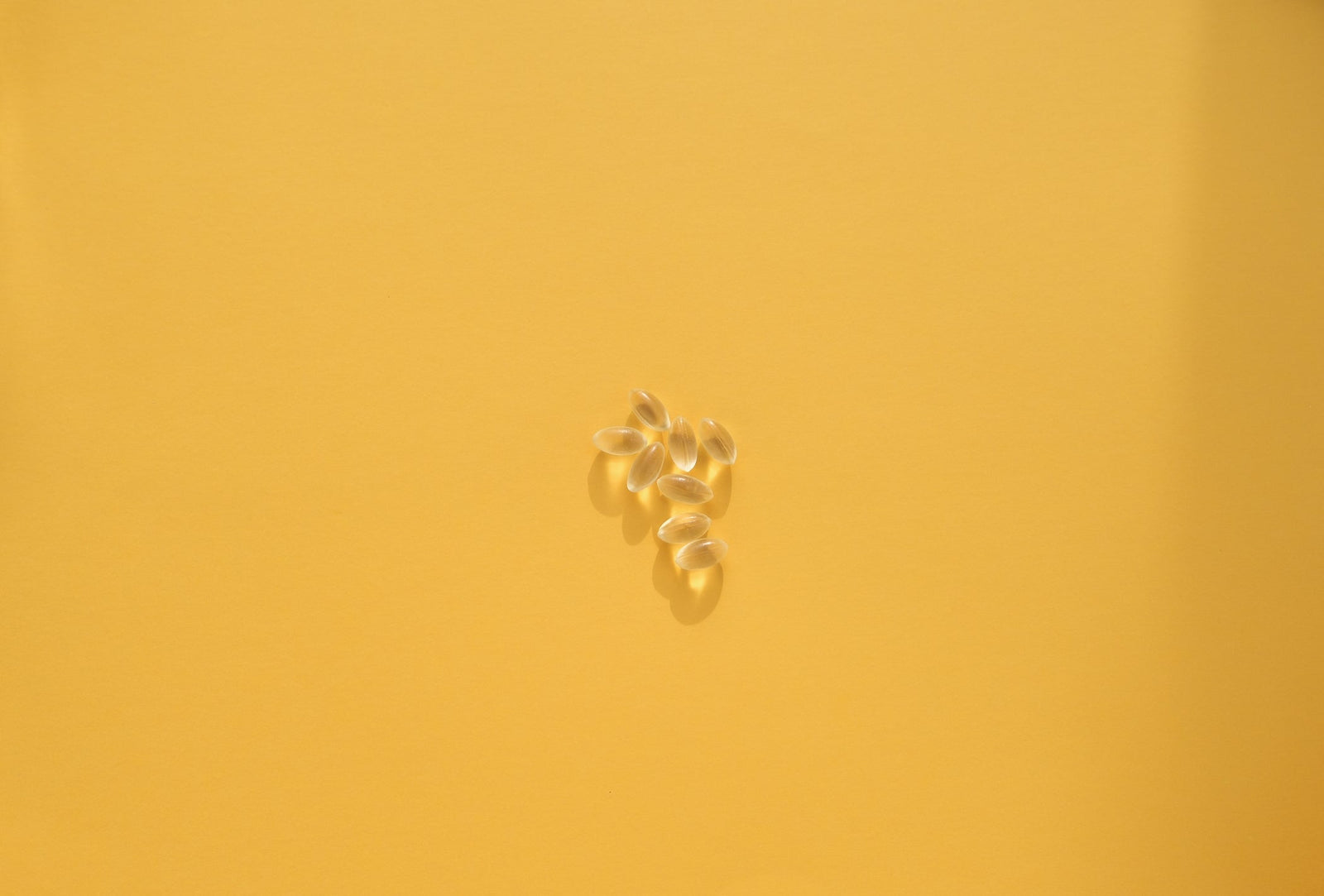Your Cart is Empty

November 06, 2024 9 min read
Take our quiz and find which supplements your body is craving.

Written by Chris Bellanger, BHSc in Nutritional Medicine
Our DNA is like a detailed blueprint for building and maintaining our bodies, which can be damaged at any stage from conception on, and lead to genetic mutations manifesting as developmental defects early in life or cancer and chronic disease later in life.
Cells with DNA damage, such as those containing multicentric chromosomes, micronuclei, or with excessive telomere shortening, become genomically unstable and/or senescent.
Senescent cells, which are a bit like zombies that neither die nor work properly, increase with age, and their proinflammatory phenotype elevates the risk of other age-related diseases, including infertility, autoimmune diseases, diabetes, chronic kidney disease, cardiovascular diseases, and neurodegenerative diseases. (1)
This article explores how you can protect your DNA—our body's essential blueprint—from damage using nutrition. It also examines how scientists measure DNA damage and how diet can reduce these harmful effects.
Scientists have developed several ways to measure DNA damage, with the earliest methods looking at chromosomes in white blood cells under a microscope to find structural or numerical abnormalities. Nowadays, simpler methods include counting micronuclei, which are tiny, extra nuclei in cells that indicate chromosome fragments or whole chromosomes that don't divide properly during cell division.
At a more detailed level, DNA damage can be observed in telomeres, which are protective caps at the ends of chromosomes. Telomeres shorten every time a cell divides, and if they get too short, the cell can no longer divide properly, leading to aging and disease. (1)

Many studies have shown that DNA damage biomarkers correlate with insufficient intake of various micronutrients, including vitamin C, E, folate, B-vitamins, zinc, iron, magnesium, manganese, calcium, and selenium.
Deficiencies in these micronutrients, which play critical roles as cofactors in DNA replication, repair, and defense against genotoxins, are known to be major causes of DNA damage in humans. (1)
Folate, vitamin B12, magnesium, and zinc are required for DNA replication and nucleotide synthesis, DNA methylation, and chromosome stability. Vitamin C, vitamin E, zinc, manganese, and selenium are required for preventing DNA oxidation, and niacin, zinc, iron, and magnesium are required for DNA damage sensing and repair.
Lacking these nutrients increases DNA replication stress, and genomic instability, exacerbates DNA damage susceptibility caused by genotoxins, and disables normal control of gene expression by epigenetic mechanisms.
Additionally, protein deficiency and excessive calories leading to obesity are highly associated with DNA damage. (2)
Think of vitamins and minerals as the superheroes of the nutritional world. They swoop in to save your DNA from the evil forces of damage and decay. Vitamin C, for instance, is like a shield, protecting against oxidative stress, while folate and B vitamins are the builders, ensuring proper DNA replication and repair. So, keep your DNA superheroes strong by eating a balanced diet rich in these essential nutrients.
The majority of research into essential micronutrients, as well as non-essential but protective plant-derived phytochemicals, shows significant reductions in DNA damage. However, a small number of studies did show increased DNA damage in some people from things like beta-carotene or black currant juice.
There could be several reasons for this, some of which may include:
Factors contributing to above-average DNA damage levels include genetic defects in antioxidant and repair enzymes, high exposure to genotoxins, and micronutrient deficiencies.
These outcomes verify the plausibility of reducing human DNA damage using nutritional methods and suggest that recommended dietary reference ranges should be improved using these biomarkers. (1)

Now let's explore how various plant-based compounds can protect our DNA from damage caused by harmful substances such as aflatoxin and chemotherapy, as well as the effectiveness of whole foods vs supplements for safeguarding our cells and improving overall health.
It's important to remember that the examples below are just examples of recent research. The likelihood of many other whole foods having a similar effect is quite high, and additional research in these areas is booming.
Cooked Ethiopian mustard was shown to reduce DNA damage induced by aflatoxin B1 in healthy participants, while a flavonoid extracted from hops, Xanthohumol, protected against DNA damage caused by dietary carcinogens.
Brussels sprouts were protective against DNA damage in lymphocytes, inhibiting enzymes involved in carcinogen activation, and high phenol extra virgin olive oil consumption was associated with reduced DNA damage in postmenopausal women. (3)
Increasingly we are seeing exciting research highlighting the potential ways to reduce harmful side-effects of cancer treatments like radiotherapy and chemotherapy.
For example, a study investigating radiotherapy toxicity found a multi-agent antioxidant pill was protective against Tc99 isotope application, showing a significant reduction in double-strand breaks.
Preliminary research also showed the protective effects of chamomile, aloe vera, and calendula against inflammation of the oral mucosa caused by chemotherapy radiations. (3)
Phytochemicals, such as selenium and vitamin E, show promise in enhancing the therapeutic ratio of chemotherapy, which can improve hematologic toxicity and neuropathy in patients undergoing cisplatin therapy.
Some Chinese herbal medicines, combined with chemotherapy, show improvements in immunocompetent cell stimulation and side effect reduction. (3)
Phytochemicals like resveratrol, lignans, and curcumin may help enhance tumoricidal action while reducing the secondary effects of radiotherapy for specific types of cancers, such as breast cancer, by acting along specific molecular pathways. (3)
These findings, and many more, can improve the quality of life for cancer patients by minimizing the adverse effects of their treatment.
While supplements do have some great outcomes, results can be mixed. Researchers suspect it may be because micronutrients are in combination with a multitude of other beneficial compounds in foods instead of just an isolated synthetic nutrient.
Additionally, many compounds in plants, while not essential, do activate or improve repair mechanisms. For example, kiwi was shown to boost DNA repair by two enzymes, OGG1 and APE1, which fix oxidative damage in DNA, thus preventing mutations that could lead to cancer. (4)
Now let's explore more natural compounds and foods and their ability to protect against DNA damage and improve our health.
Astaxanthin has shown diverse benefits, including:
It can be found in many red seafoods such as shrimp, salmon, fish eggs, and krill oil, as well as egg yolks, chlorella, and algae oils. (5)
Blueberries are rich in antioxidants and trace nutrients and exert a powerful health boost, which includes a reduction of DNA damage. (6, 7)
Chlorella offers a wide range of nutrients, including astaxanthin, and confers a multitude of health benefits, such as decreasing DNA damage in smokers. (3)
Kiwifruit is protective against oxidative DNA damage, enhances antioxidant activity, and stimulates DNA repair while also containing antioxidants, which have been shown to reduce UVB-induced DNA skin damage with a history of melanoma or skin cancer. (3)

Creatine isn’t just for athletes but also has many therapeutic benefits, such as reducing oxidative stress in the body. Creatine has also been shown to protect against oxidative DNA damage after exercise and mitochondrial DNA damage, which may contribute to protecting against neurodegeneration, skin photoaging, and tumor development. (8, 9)
Curcumin, resveratrol, and quercetin are also well-known for their myriad health benefits. In a review of their antioxidant and chemoprotective properties, these three polyphenols are known to act as free radical scavengers, help eliminate harmful compounds from cells, and chelate metal ions, which itself can generate harmful reactive oxygen species.
They positively influence protective enzymes such as superoxide dismutase, glutathione S-transferase, heme oxygenase, cyclooxygenase, cytochrome P450, and more. These benefits primarily include reducing lipid peroxidation, LDL oxidation, and oxidative DNA damage, all linked to cancer prevention. (10)
Studies show supplementation with omega-3 fatty acids reduced the risk for sunburns and reduced sunlight-induced DNA damage (11), while fish oil supplementation enhanced DNA methylation. (12)
Garlic oil supplements given to hypertensive persons helped reduce blood pressure, as well as significantly reducing DNA damage. (13)
Glutathione helps neutralize free radicals as a primary defender against oxidative stress and mitigate damage caused to DNA. (14)
Lemon balm tea consumed daily for 30 days was associated with less DNA damage in people exposed to low-level radiation. (15)
Watercress consumption for eight weeks was associated with less DNA damage, as well as greater protection against the damage of smoking. (16)
Determining the biologically meaningful level of DNA damage reduction with respect to disease prevention is essential. In vitro studies with lymphocytes showed that specific folate concentrations reduce MN frequency significantly.
Establishing a biologically plausible standard for health significance involves understanding the health risks associated with DNA damage levels and the degree of reduction achievable through micronutrient supplementation.
Clear evidence shows that substantial reductions in DNA damage levels, as well as protection against genotoxins, can be achieved through dietary augmentation, plus supplementation, incorporating a range of non-essential but highly protective phytochemicals from a range of plant superfoods such as acerola, spirulina, maca, and many more.
Numerous natural compounds can reduce oxidative damage, enhance antioxidant status, and stimulate detoxification and DNA repair pathways, offering highly plausible cancer prevention and management strategies, though much more research is still needed. (1)
Discover more about your genetics and get tailored reports that can help you optimize and personalize your wellness.

April 08, 2025 7 min read
Discover the powerful trio for graceful aging—Vitamin D3+K2 and Omega-3 fatty acids. This dynamic combination supports bone strength, heart health, immune function, and reduces inflammation, helping you maintain vitality and well-being as you age.

March 20, 2025 8 min read
Discover the benefits of creatine for women with Amandean’s Creatine HCI. Improve strength, energy, recovery, and cognitive function with this high-absorption formula. Its advanced HCl form ensures easy digestion and no bloating, providing all the benefits without the drawbacks. Elevate your fitness journey and overall wellness with a supplement designed for women’s unique needs.

March 03, 2025 7 min read
Discover how Bryan Johnson, a tech entrepreneur turned biohacker, uses cutting-edge science and personalized genetic testing to revolutionize health and longevity. Learn how biohacking, from diet to mental health practices, can help you live longer and healthier, with practical strategies to optimize your well-being. Find out more about genetic testing, and ways to implement results into your wellness routine.